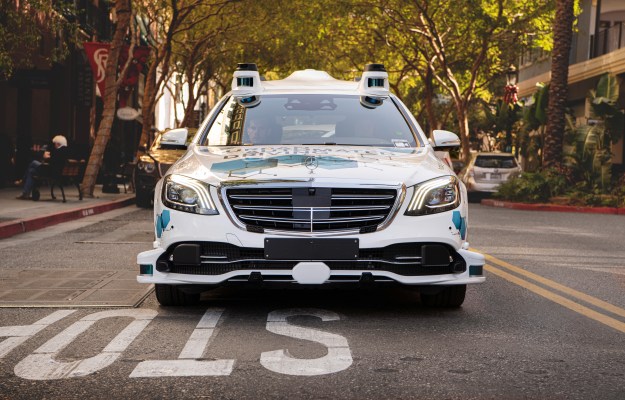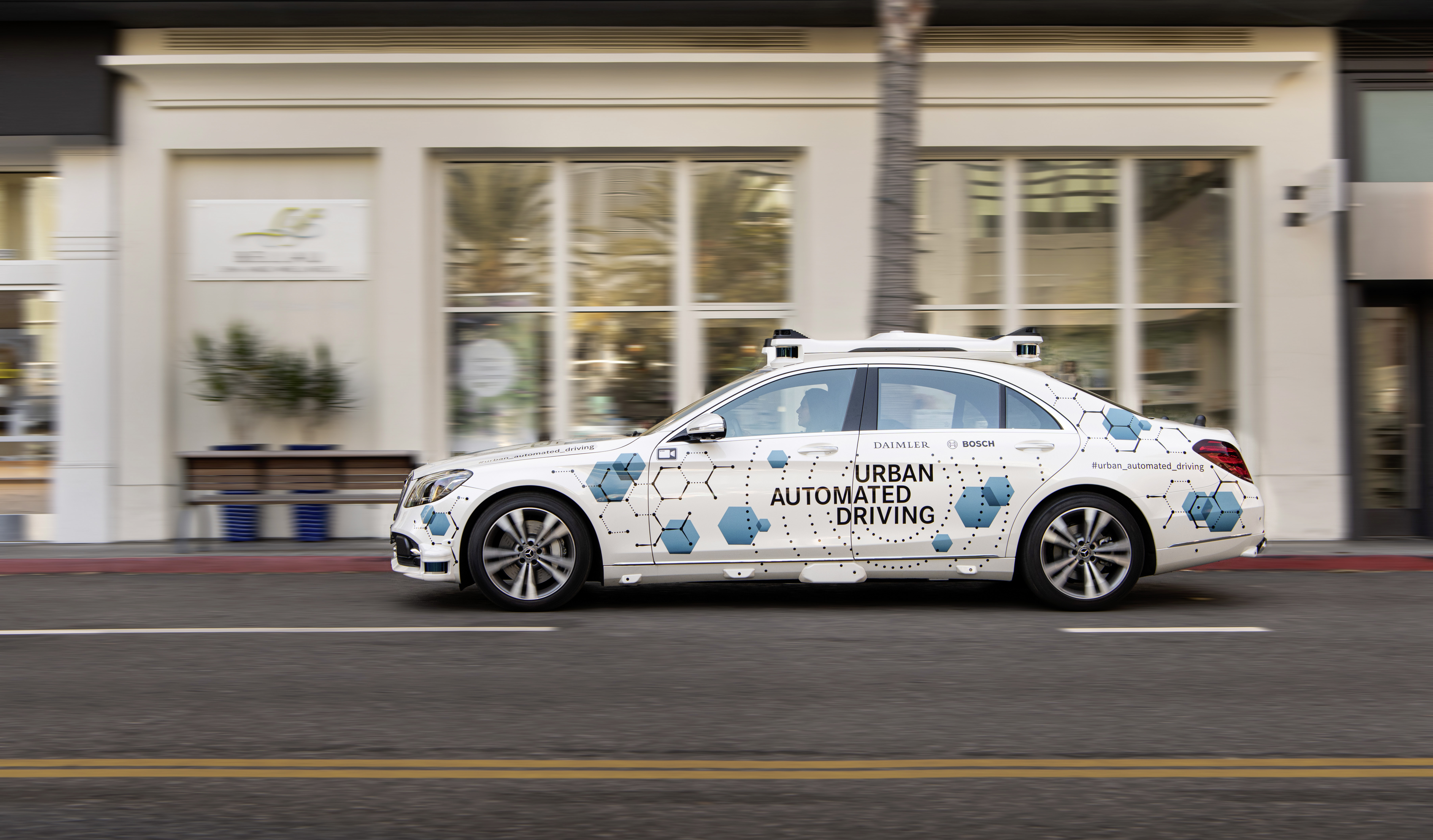A fleet of Mercedes-Benz S Class vehicles are now plying the roads of San Jose, California as part of a robotaxi pilot project that Daimler and Bosch have been developing for two and a half years, but the launch itself could be chalked up as a mere blip on the autonomous vehicle scene.
At last count, 65 companies have permits to test autonomous vehicles in California. And a handful of companies, including Waymo and Zoox, have the additional permit from the California Public Utilities Commission to transport passengers in their robotaxis through the state’s Autonomous Vehicle Passenger Service pilot.
It’s a milestone for German automaker Daimler and Bosch, one of the world’s largest automotive tech and hardware suppliers, but the most noteworthy aspect is how the pilot has been structured. The companies’ approach provides a marker of sorts for exactly where the “race” to develop and deploy commercial autonomous vehicle stands. In short: this is no sprint. Adventure or expedition racing — a contest that requires strategy, partnerships, expertise in multiple areas, endurance and a head for navigating risk— might be a more apt analogy.
Much of the media coverage has focused on the launch of the pilot or that it will use self-driving Mercedes-Benz S-Class vehicles, the Sonderklasse (special class) of the automaker’s portfolio. What might have been missed is that this is really two projects in one.
Sven Zimmermann, director of automated driving at Bosch USA, calls it a “mixed mobility” approach, meaning that the fleet will be broken up to focus on two areas: ride-hailing and autonomous vehicle technology.
Of the 30 Mercedes-Benz vehicles in the pilot project, five will be autonomous cars (always with a human safety driver behind the wheel) driving in a more restricted area and on a fixed route in San Jose, Zimmermann said in a recent interview. The remaining 25 vehicles will be human-operated and used in a larger geographic area. That mix will likely change over time.
Autonomous only
The autonomous section of the project will be constrained to a geofenced area in the San Carlos and Stevens Creek corridor between downtown and west San Jose with service initially available only for a select group of riders who will book journeys before automated S-Class vehicles deliver them from a defined pick-up point to their destination.
It’s unclear who belongs to this select group of users, but regulatory constraints provide a few clues; Daimler-Bosch lacks a CPUC Drivered AV permit, which is required to test a ride-hailing service using self-driving vehicles with a human safety driver behind the wheel. Only four companies, AutoX, Pony.ai, Waymo and Zoox, have such a permit today.
This means the Daimler-Bosch robotaxi pilot cannot give the public rides until it has a permit. A Bosch spokesperson confirmed that the companies are currently in the application process for a CPUC license. For now, Daimler and Bosch associates are able to use the service, a Bosch spokesperson said.
Other companies have tapped into their employee base to test ride-hailing apps and usability of their self-driving vehicles. For example, Cruise, which has dozens of self-driving vehicles on public roads in San Francisco, doesn’t have a CPUC permit. Instead, Cruise employees use their in-house ride-hailing robotaxi app. Feedback from employees is used to identify problems and improve the app and service.
The autonomous piece of this pilot is as much about building city relationships as it is for the research and development. San Jose city officials want to study and understand the impact of autonomous technology in the future, Zimmermann said. “We’re working together with the city to define what they will need.”
That insight will involve more than determining whether self-driving cars make sense for San Jose. The city and the two companies want to better understand how autonomous vehicles can be integrated into a broader mobility system that includes public transit and on-demand services like ride-hailing and scooter/bike sharing.
Dolan Beckel, San Jose’s director of civic innovation, said the city wants to find out more about how automated vehicles can help cities make their traffic flows smoother and safer, as well as make mobility more available, sustainable and inclusive.
Ride-hailing
For now, the bulk of the fleet will be human-driven vehicles operating in a wider geographic area. The companies have structured it this way to help them better understand the ride-hailing service business and and eventually how it will work with autonomous vehicles, Zimmermann explained, adding that this mixed mobility approach is a starting point.
It’s also a way for the Daimler-Bosch venture to fold in another player. The app used to book these journeys was developed by Daimler Mobility AG, the financial and mobility services arm of Daimler’s parent company.
The partnership with the city of San Jose will come to a close at the end of 2020. The pilot will last a minimum of four months and an end date has not been determined, Zimmermann said. The self-driving vehicles have been on the road for several weeks now and already the companies have been surprised by how much road conditions can vary due to construction and other factors.
“It’s happening way more frequent than we thought,” Zimmermann added.
This dual approach to an autonomous ride-hailing project isn’t unheard of. Ford has put the technical and business parts of autonomous vehicles in separate silos that are meant to eventually come together. But it does provide some insight into how Daimler and Bosch are approaching autonomous vehicles and the cities they’re operating in. The approach of this pilot is particularly interesting in light of Daimler CEO Ola Kallenius’ recent remarks about taking a “reality check” on self-driving taxis. Earlier this month, Kallenius’ acknowledged making self-driving vehicles safe is harder than first thought.
“It’s not just the automated vehicles that have to prove their mettle. We also need proof that they can fit in as a piece of the urban mobility puzzle. We can test both these things in San Jose,” Dr. Uwe Keller, head of autonomous driving at Mercedes-Benz AG said in the company’s announcement this week.

